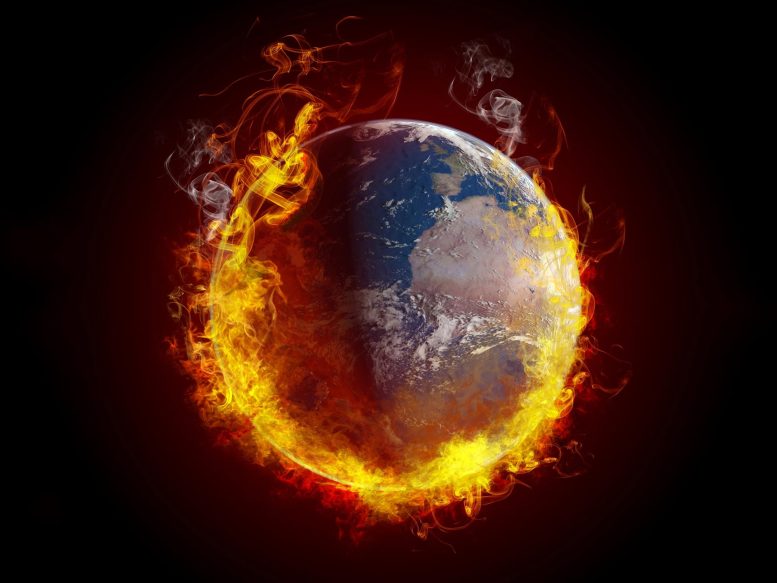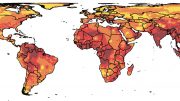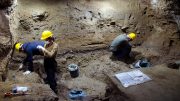
New research links historical climate change in the Andes to increased violence, highlighting the vulnerability of people in marginal environments to current and future climate impacts.
An archaeological study from UC Davis suggests that there may have been competition for limited resources.
Climate change in current times has created problems for humans such as wildfires and reduced growing seasons for staple crops, spilling over into economic effects. Numerous studies have both predicted and documented a rise in interpersonal conflicts and homicides as temperatures climb.
Violence during climatic change has evidence in history. University of California, Davis, researchers said they have found a pattern of increased violence during climatic change in the south-central Andes between A.D. 470 and 1500. During that time, which includes the Medieval Climatic Anomaly (ca. A.D. 900-1250), temperatures rose, drought occurred, and the first states of the Andes collapsed.
Climate change and potential competition for limited resources in the south-central Andes likely led to violence among people living in the highlands at that time, researchers suggest in a new paper. Their study looked at head injuries of the populations living there at that time, a commonly used proxy among archaeologists for interpersonal violence.
“We found that decreased precipitation predicts increased rates of cranial trauma,” said Thomas J. Snyder, a doctoral candidate in the Department of Anthropology’s Evolutionary Wing and the primary author of the study.
“This observation suggests that climate change in the form of decreased precipitation exerted a significant effect on rates of interpersonal violence in the region.”
The study was published June 5 in Quaternary Research, Cambridge University Press. The co-author of the paper is Randall Haas, formerly of the same lab at UC Davis and currently a professor at Wayne State University.
Violence not found in coastal, mid-elevation regions
The same results were not found in coastal and mid-elevation regions, indicating they chose nonviolent solutions to climate change or were not affected by it, researchers said. There was also more agricultural and economic diversity there, potentially buffering against the onset of climate change. Drought-induced resource scarcity in the highlands, however, seems like a likely explanation for the violence there, researchers said.
Snyder said looking at the history of people’s interaction with nature is important when considering the possible effects of current climate change challenges and people’s interaction with their climate.
“Our findings reinforce the idea that people living in already marginal environments are the most likely to be hit hardest by climate change,” he said. “Archaeological research can help us predict how best to handle the challenges faced by people in precarious positions in a rapidly changing climate.”
UC Davis researchers recorded violence during early years in the Andes by analyzing existing data of nearly 3,000 skeletal fractures of humans found at 58 archaeological sites — comparing them to ice accumulation at the time at the Quelccaya glacier — in what is now Peru, Chile and Bolivia. At the same time, there was widespread abandonment of Wari and Tiwanaku sites in the region, indicating a sociopolitical unraveling after the onset of the centuries-long global climate changes.
The archaeology of the Andes provides an excellent opportunity to study the human response to climate change given the region’s extreme climatic variability, incredible archaeological preservation and robust records, researchers said. In this study, researchers found that on average, for every 10-centimeter decrease in annual ice accumulation at the Quelccaya glacier, the likelihood of interpersonal violence more than doubled.
Reference: “Climate change intensified violence in the south-central Andean highlands from 1.5 to 0.5 ka” by Thomas J. Snyder and Randall Haas, 5 June 2023, Quaternary Research.
DOI: 10.1017/qua.2023.23









“An archaeological study from UC Davis suggests that there may have been competition for limited resources.”
And other revelations such as “Water is wet.”
This is little better than anecdotal observations. How do the authors address the possibility that the two parameters are exhibiting spurious correlation? That is, that it isn’t just a coincidence. A single instance, in one culture, in one geographic locality does not support extrapolation to a general human trait. I think that this is a rope bridge too far.